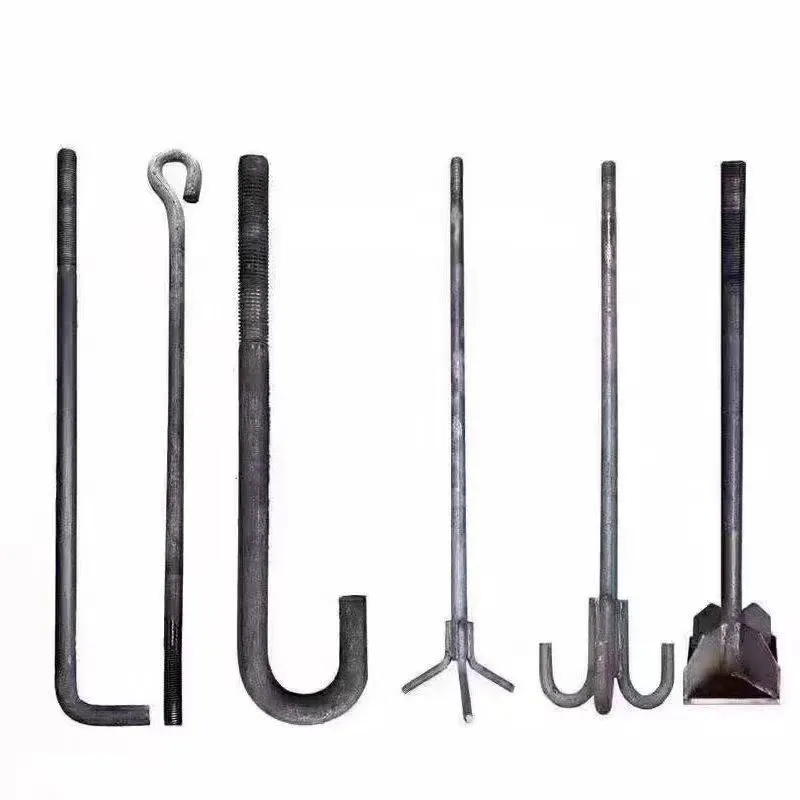

Choosing the Right Fasteners for Concrete Applications to Ensure Strong and Secure Connections
Nov . 27, 2024 19:55 Back to list
Choosing the Right Fasteners for Concrete Applications to Ensure Strong and Secure Connections
Understanding Concrete Fasteners A Comprehensive Guide
When it comes to securing materials to concrete surfaces, concrete fasteners are indispensable tools in construction, woodworking, and masonry. These fasteners are specifically designed to anchor various objects to concrete, ensuring that structures are stable, secure, and built to last. This article will explore the different types of concrete fasteners, their applications, benefits, and installation techniques.
Types of Concrete Fasteners
1. Expansion Anchors Expansion anchors are among the most common types of concrete fasteners. They work by expanding against the sides of the drilled hole as the fastener is tightened. The most popular variations include wedge anchors, sleeve anchors, and drop-in anchors. Wedge anchors are used for heavier loads, while sleeve anchors are versatile and suitable for various applications. Drop-in anchors are often used when a flush surface is required, making them ideal for overhead applications.
2. Concrete Screws Concrete screws, such as Tapcon screws, are designed with a sharp thread that cuts into the concrete as they are screwed in. They provide a strong hold and are easy to install without the need for a plug or anchor, making them a favorite among DIY enthusiasts and professionals alike.
3. Chemical Anchors For challenging environments or heavy loads, chemical anchors may be the best option. These consist of a special adhesive that is injected into a drilled hole, and a threaded rod or rebar is then inserted. The chemical compound cures and hardens, providing a robust anchor that can withstand significant stress and vibration.
4. Post-Installed Anchors These anchors are installed after the concrete has cured. They allow for flexibility in construction because they can be positioned based on the final design requirements. Post-installed anchors come in various forms, including adhesive and expansion style, and are essential for retrofitting applications.
Applications of Concrete Fasteners
Concrete fasteners are used in a wide range of applications across many industries. Common examples include
concrete fasteners

- Construction In new construction projects, concrete fasteners are used to secure structural elements, formwork, and framing systems. - Masonry They are essential in attaching brick or block to a concrete foundation or wall. - HVAC Fasteners secure equipment like ducts and compressors to concrete surfaces, ensuring stability and safety. - Infrastructure Concrete fasteners hold street signage, guardrails, and other infrastructure components securely in place.
Benefits of Using Concrete Fasteners
The primary benefit of concrete fasteners is their ability to provide strong, reliable connections in concrete, which is inherently challenging to work with due to its rigidity and density. Additional advantages include
- Durability Concrete fasteners are designed to withstand harsh environmental conditions, making them ideal for both indoor and outdoor applications. - Ease of Installation Many concrete fasteners, like concrete screws, are straightforward to install, saving time and labor costs. - Versatility With multiple types available, concrete fasteners can accommodate a wide variety of applications and load requirements. - Load-bearing Capacity They offer exceptional load-bearing capabilities, which is crucial for safety in construction and design.
Installation Techniques
The installation of concrete fasteners requires careful planning and execution. Here are some essential steps to follow
1. Select the Right Fastener Choose a fastener type based on the load requirements and the specific application. 2. Prepare the Site Ensure the concrete surface is clean and free from debris. Identifying the right location is vital, especially for load-bearing situations. 3. Drill the Hole Use a hammer drill with a masonry bit to create a hole of the appropriate diameter and depth for the selected fastener. 4. Insert the Fastener Follow the manufacturer's instructions for the specific fastener being used, ensuring a secure fit. 5. Test the Connection After installation, it’s crucial to test the connection, particularly for heavy loads or critical applications.
Conclusion
Concrete fasteners are essential for a variety of applications in construction and manufacturing. Understanding the different types, their specific uses, and proper installation techniques can ensure safety, reliability, and durability in securing structures to concrete surfaces. By selecting the right fastener for the job, you can optimize performance and enhance the longevity of your projects. Whether you’re a professional contractor or a DIY enthusiast, mastering the use of concrete fasteners is undoubtedly a valuable skill.
Latest news
-
Premium Fasteners Manufacturer | AI-Driven Solutions
NewsAug.01,2025
-
Hot Dip Galvanized Bolts - Hebei Longze | High Strength, Corrosion Resistance
NewsAug.01,2025
-
High-Strength Hot Dip Galvanized Bolts - LongZe | Corrosion Resistance, Custom Sizes
NewsAug.01,2025
-
Best Self Tapping Screws for Drywall - Fast & Secure Installation
NewsJul.31,2025
-
High-Strength Hot Dip Galvanized Bolts-Hebei Longze|Corrosion Resistance&Customization
NewsJul.31,2025
-
Hot Dip Galvanized Bolts-Hebei Longze Metal Products|Corrosion Resistance&High Strength
NewsJul.31,2025

